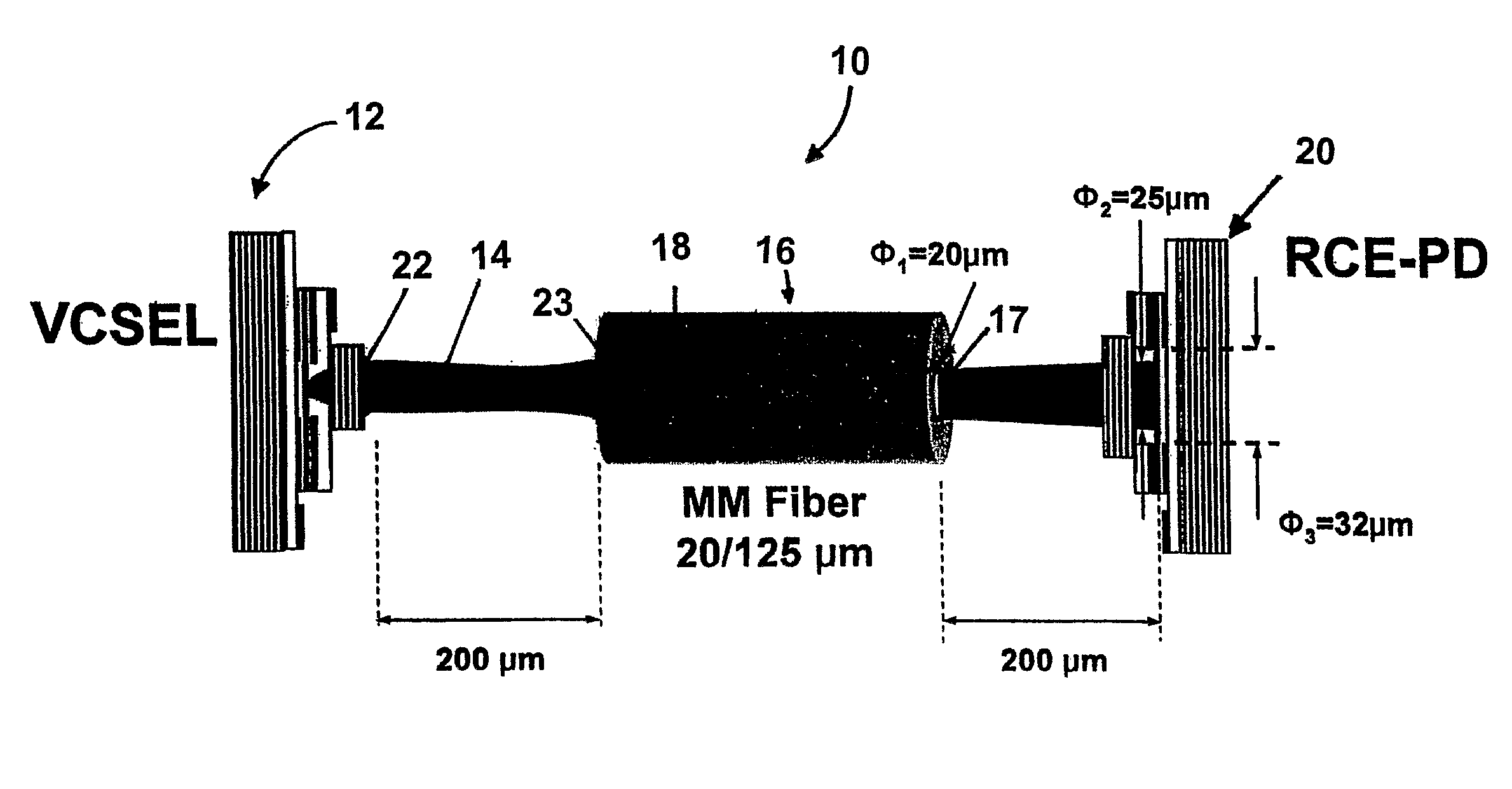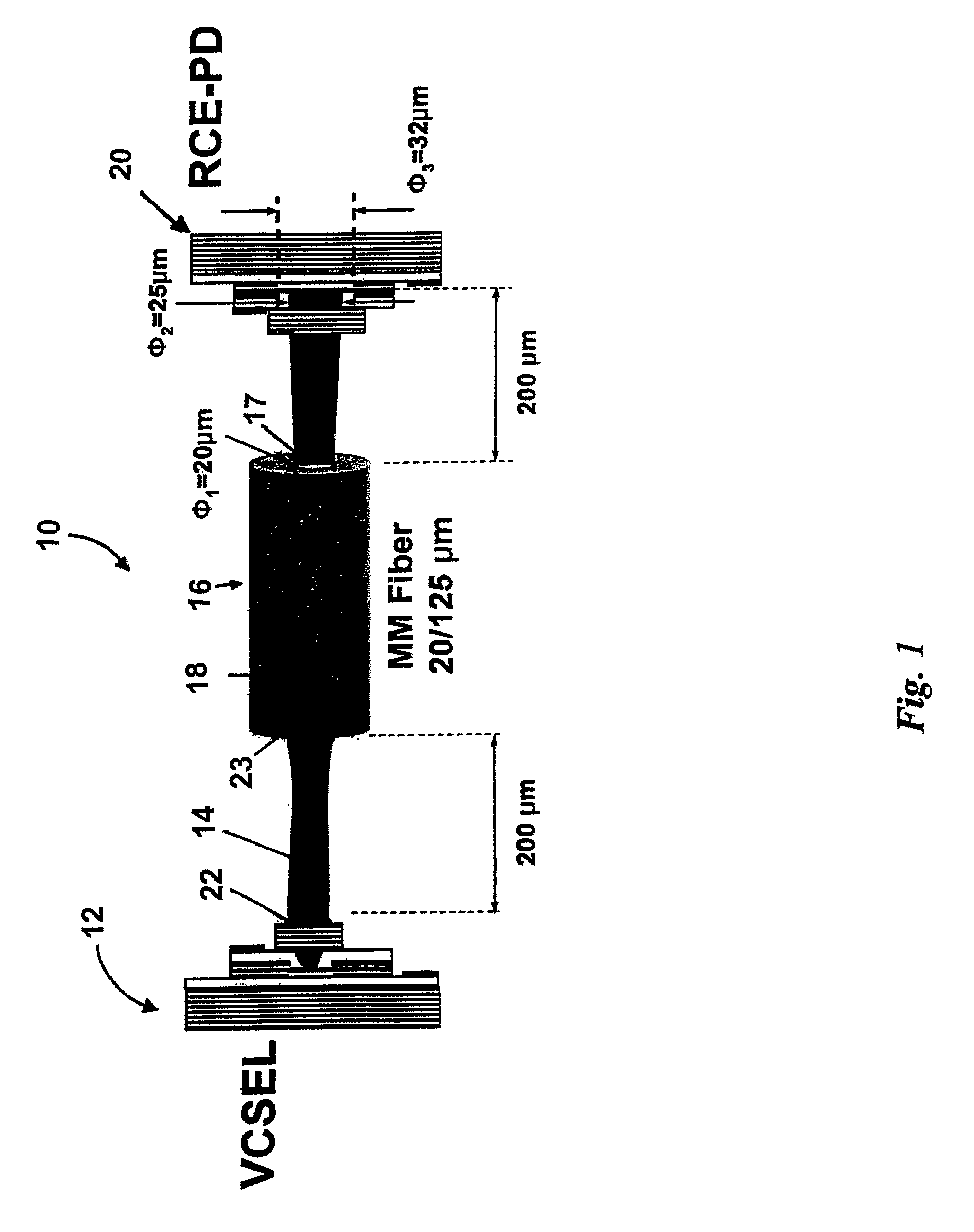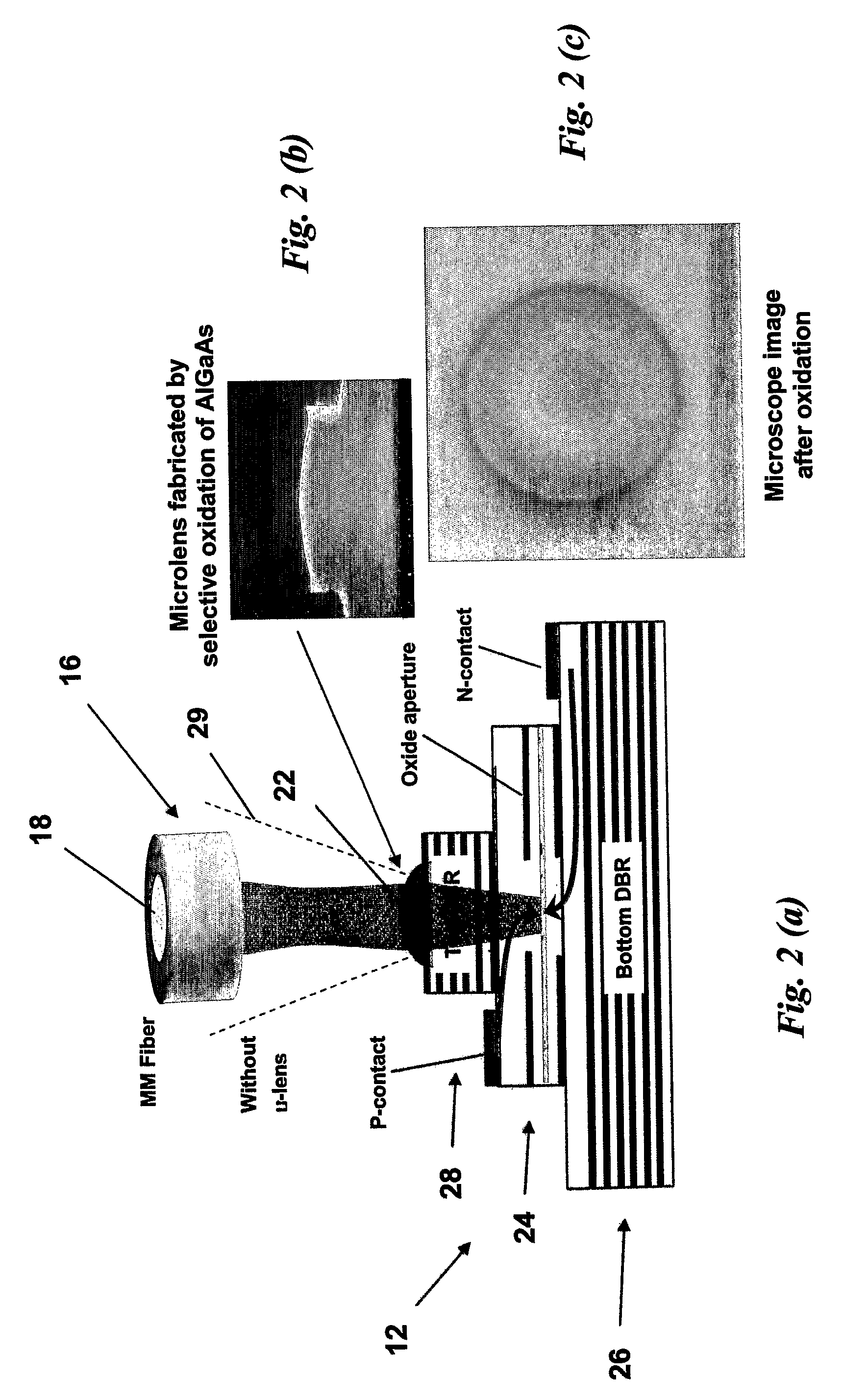Optical connection component
a technology of optical connection and component, applied in the direction of optical elements, semiconductor lasers, instruments, etc., can solve the problems of reducing the tolerances of positioning the optical fiber, the fundamental physical limitations of the electrical connection for high-speed data transmission, and the cumbersome and expensive precision of the positioning of the optical fiber, so as to achieve the effect of reducing the number of coupling losses and avoiding substantial coupling losses
- Summary
- Abstract
- Description
- Claims
- Application Information
AI Technical Summary
Benefits of technology
Problems solved by technology
Method used
Image
Examples
Embodiment Construction
[0085]Referring initially to FIG. 1, an optical connection component according to a specific embodiment of the present invention is now described. The optical connection component 10 comprises a solid state laser component, which is in this embodiment provided in the form of a vertical cavity surface emitting laser (VCSEL) 12. The VCSEL 12 emits laser light 14, which is coupled into an optical fibre 16. The optical fibre 16 guides the emitted light in a core 18. The guided light is emitted from an end-portion 17 of the optical fibre 16 and directed to a receiver, which is in this embodiment provided in the form of a resonant cavity enhanced photo diode (RCE-PD) 20.
[0086]The optical connection component 10 comprises input terminals (not shown) to which an electrical signal is applied and which are connected to the VCSEL 12 so that the emitted laser beam 14 is modulated by the electrical signal. The high frequency electrical signal is in this example associated with transmission of da...
PUM
 Login to View More
Login to View More Abstract
Description
Claims
Application Information
 Login to View More
Login to View More - R&D
- Intellectual Property
- Life Sciences
- Materials
- Tech Scout
- Unparalleled Data Quality
- Higher Quality Content
- 60% Fewer Hallucinations
Browse by: Latest US Patents, China's latest patents, Technical Efficacy Thesaurus, Application Domain, Technology Topic, Popular Technical Reports.
© 2025 PatSnap. All rights reserved.Legal|Privacy policy|Modern Slavery Act Transparency Statement|Sitemap|About US| Contact US: help@patsnap.com



